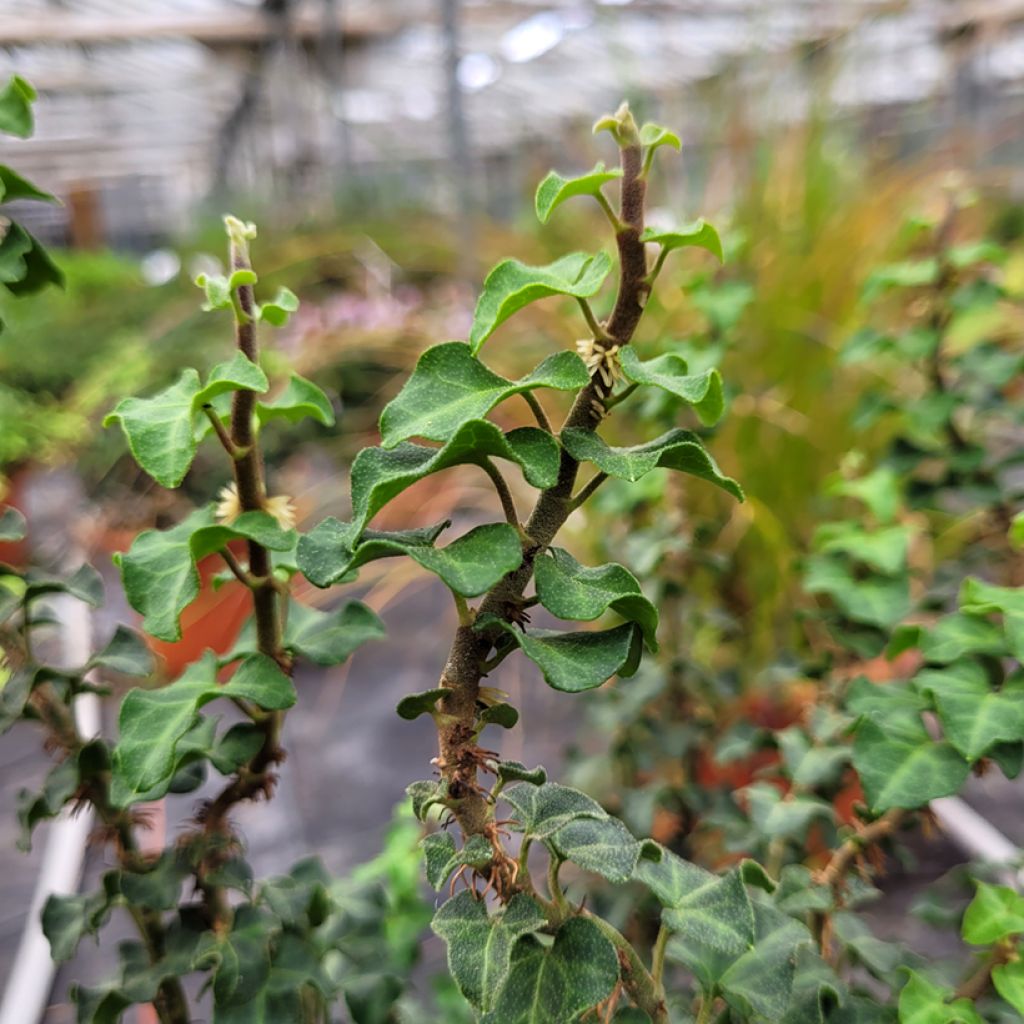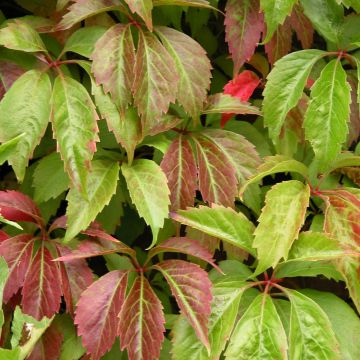

Hedera helix Conglomerata - Common ivy


Hedera helix Conglomerata - Common ivy
Hedera helix Conglomerata - Common ivy
Hedera helix Conglomerata
English ivy, Common ivy
Special offer!
Receive a €20 voucher for any order over €90 (excluding delivery costs, credit notes, and plastic-free options)!
1- Add your favorite plants to your cart.
2- Once you have reached €90, confirm your order (you can even choose the delivery date!).
3- As soon as your order is shipped, you will receive an email containing your voucher code, valid for 3 months (90 days).
Your voucher is unique and can only be used once, for any order with a minimum value of €20, excluding delivery costs.
Can be combined with other current offers, non-divisible and non-refundable.
Home or relay delivery (depending on size and destination)
Schedule delivery date,
and select date in basket
This plant carries a 24 months recovery warranty
More information
We guarantee the quality of our plants for a full growing cycle, and will replace at our expense any plant that fails to recover under normal climatic and planting conditions.
Would this plant suit my garden?
Set up your Plantfit profile →
Description
Hedera helix 'Conglomerata' is a rare cultivated dwarf form of common ivy. It is a miniature variety with a creeping habit, featuring a few upright stems with tiny evergreen leaves clustered on them. It thrives in shade or partial shade, in a small rockery, at the edge of woodlands, or under trees. It adapts to all soils, even limestone and dry in summer. Use it in a container on the terrace, mixed with other plants.
Ivies belong to the Araliaceae family. Hedera helix 'Conglomerata' is sometimes marketed under the names Hedera helix var. conglomerata or Hedera helix var. conglomerata erecta. This plant originates from common ivy, which is found everywhere in forests, countryside, and gardens. The common ivy is native to the entire temperate Eurasian zone of the northern hemisphere. Its foliage is evergreen in all regions.
Hedera helix 'Conglomerata' is a slow-growing creeping semi-shrub forming a clump about 30-40 cm high. It spreads on the ground over time, covering about 1 m². Its small triangular, 2 to 3 cm long and wide leaves are densely and regularly arranged on thick branches. Most of these branches lie on the ground, while some stand upright. Each leaf is marked with clear veins, giving it a marbled appearance. Young leaves are a beautiful light green, while mature leaves are a dull dark greyish green.
Hedera helix 'Conglomerata' is resistant to severe frost and drought and thrives everywhere except in hot exposures. It will bring a unique touch to poor areas of the garden, even in winter. This ivy looks lovely under trees or along a shaded pathway. Planted in a large pot, it forms unusual curtains. Easy to combine, it will complement robust dry woodland perennials such as acanthus, Corsican Hellebore, and Arum italicum for example.
Report an error about the product description
Plant habit
Flowering
Foliage
Botanical data
Hedera
helix
Conglomerata
Araliaceae
English ivy, Common ivy
Cultivar or hybrid
Other Hedera - Ivy
View all →Planting and care
Hedera helix 'Conglomerata' is easy to grow in regular soil and can be planted all year round. It is very tolerant of limestone or clay if the soil is well worked, and highly resistant to drought once established. It will thrive in both sun (not scorching) and partial shade (east-facing or under sparse trees) or dense shade. Ideally, place it in a partially shaded spot sheltered from cold winds to help it establish, and monitor watering during the first two years after planting, especially in dry summers. You can rejuvenate the base by removing old branches. If desired, prune regularly to shape it. Remove any branches with leaves of a different appearance, if necessary.
For container cultivation, mix seven parts regular soil, three parts compost, and two parts sand. Water regularly and feed monthly during the growing season. Keep the substrate moist, but not waterlogged.
Planting period
Intended location
Care
This item has not been reviewed yet - be the first to leave a review about it.
Similar products
Haven't found what you were looking for?
Hardiness is the lowest winter temperature a plant can endure without suffering serious damage or even dying. However, hardiness is affected by location (a sheltered area, such as a patio), protection (winter cover) and soil type (hardiness is improved by well-drained soil).

Photo Sharing Terms & Conditions
In order to encourage gardeners to interact and share their experiences, Promesse de fleurs offers various media enabling content to be uploaded onto its Site - in particular via the ‘Photo sharing’ module.
The User agrees to refrain from:
- Posting any content that is illegal, prejudicial, insulting, racist, inciteful to hatred, revisionist, contrary to public decency, that infringes on privacy or on the privacy rights of third parties, in particular the publicity rights of persons and goods, intellectual property rights, or the right to privacy.
- Submitting content on behalf of a third party;
- Impersonate the identity of a third party and/or publish any personal information about a third party;
In general, the User undertakes to refrain from any unethical behaviour.
All Content (in particular text, comments, files, images, photos, videos, creative works, etc.), which may be subject to property or intellectual property rights, image or other private rights, shall remain the property of the User, subject to the limited rights granted by the terms of the licence granted by Promesse de fleurs as stated below. Users are at liberty to publish or not to publish such Content on the Site, notably via the ‘Photo Sharing’ facility, and accept that this Content shall be made public and freely accessible, notably on the Internet.
Users further acknowledge, undertake to have ,and guarantee that they hold all necessary rights and permissions to publish such material on the Site, in particular with regard to the legislation in force pertaining to any privacy, property, intellectual property, image, or contractual rights, or rights of any other nature. By publishing such Content on the Site, Users acknowledge accepting full liability as publishers of the Content within the meaning of the law, and grant Promesse de fleurs, free of charge, an inclusive, worldwide licence for the said Content for the entire duration of its publication, including all reproduction, representation, up/downloading, displaying, performing, transmission, and storage rights.
Users also grant permission for their name to be linked to the Content and accept that this link may not always be made available.
By engaging in posting material, Users consent to their Content becoming automatically accessible on the Internet, in particular on other sites and/or blogs and/or web pages of the Promesse de fleurs site, including in particular social pages and the Promesse de fleurs catalogue.
Users may secure the removal of entrusted content free of charge by issuing a simple request via our contact form.
The flowering period indicated on our website applies to countries and regions located in USDA zone 8 (France, the United Kingdom, Ireland, the Netherlands, etc.)
It will vary according to where you live:
- In zones 9 to 10 (Italy, Spain, Greece, etc.), flowering will occur about 2 to 4 weeks earlier.
- In zones 6 to 7 (Germany, Poland, Slovenia, and lower mountainous regions), flowering will be delayed by 2 to 3 weeks.
- In zone 5 (Central Europe, Scandinavia), blooming will be delayed by 3 to 5 weeks.
In temperate climates, pruning of spring-flowering shrubs (forsythia, spireas, etc.) should be done just after flowering.
Pruning of summer-flowering shrubs (Indian Lilac, Perovskia, etc.) can be done in winter or spring.
In cold regions as well as with frost-sensitive plants, avoid pruning too early when severe frosts may still occur.
The planting period indicated on our website applies to countries and regions located in USDA zone 8 (France, United Kingdom, Ireland, Netherlands).
It will vary according to where you live:
- In Mediterranean zones (Marseille, Madrid, Milan, etc.), autumn and winter are the best planting periods.
- In continental zones (Strasbourg, Munich, Vienna, etc.), delay planting by 2 to 3 weeks in spring and bring it forward by 2 to 4 weeks in autumn.
- In mountainous regions (the Alps, Pyrenees, Carpathians, etc.), it is best to plant in late spring (May-June) or late summer (August-September).
The harvesting period indicated on our website applies to countries and regions in USDA zone 8 (France, England, Ireland, the Netherlands).
In colder areas (Scandinavia, Poland, Austria...) fruit and vegetable harvests are likely to be delayed by 3-4 weeks.
In warmer areas (Italy, Spain, Greece, etc.), harvesting will probably take place earlier, depending on weather conditions.
The sowing periods indicated on our website apply to countries and regions within USDA Zone 8 (France, UK, Ireland, Netherlands).
In colder areas (Scandinavia, Poland, Austria...), delay any outdoor sowing by 3-4 weeks, or sow under glass.
In warmer climes (Italy, Spain, Greece, etc.), bring outdoor sowing forward by a few weeks.


















































